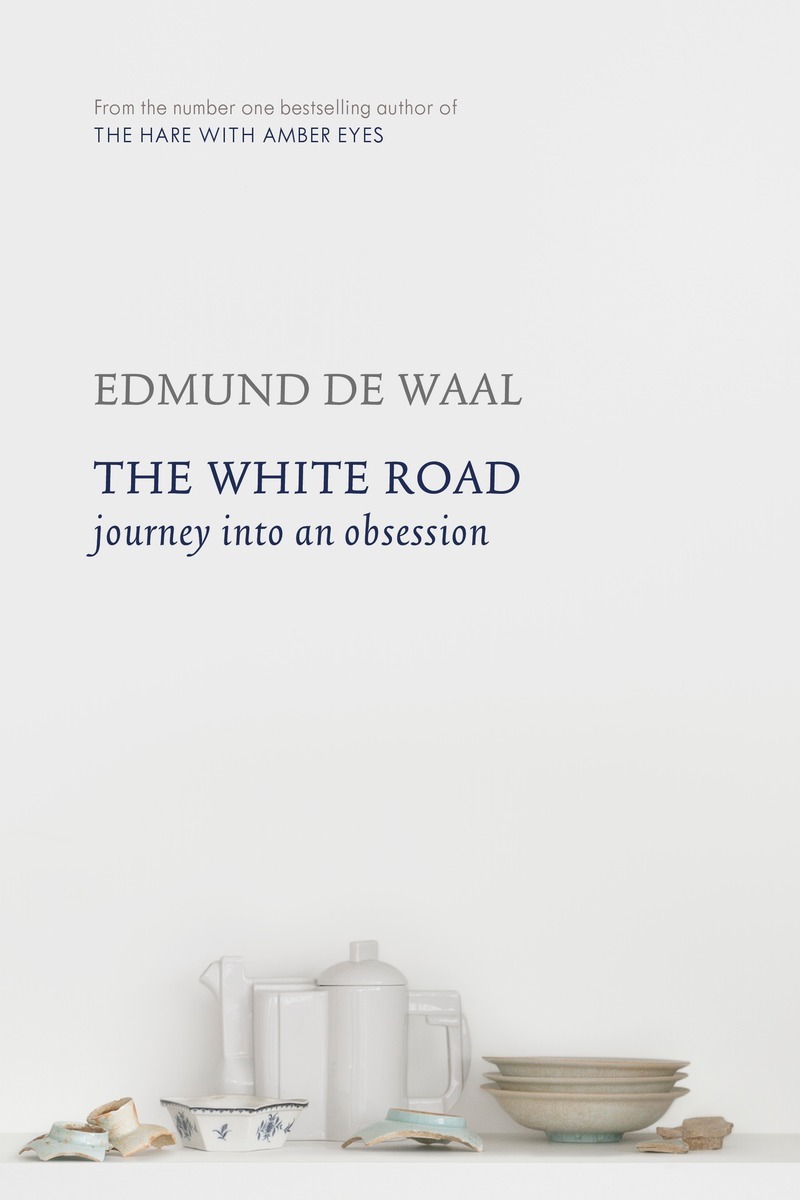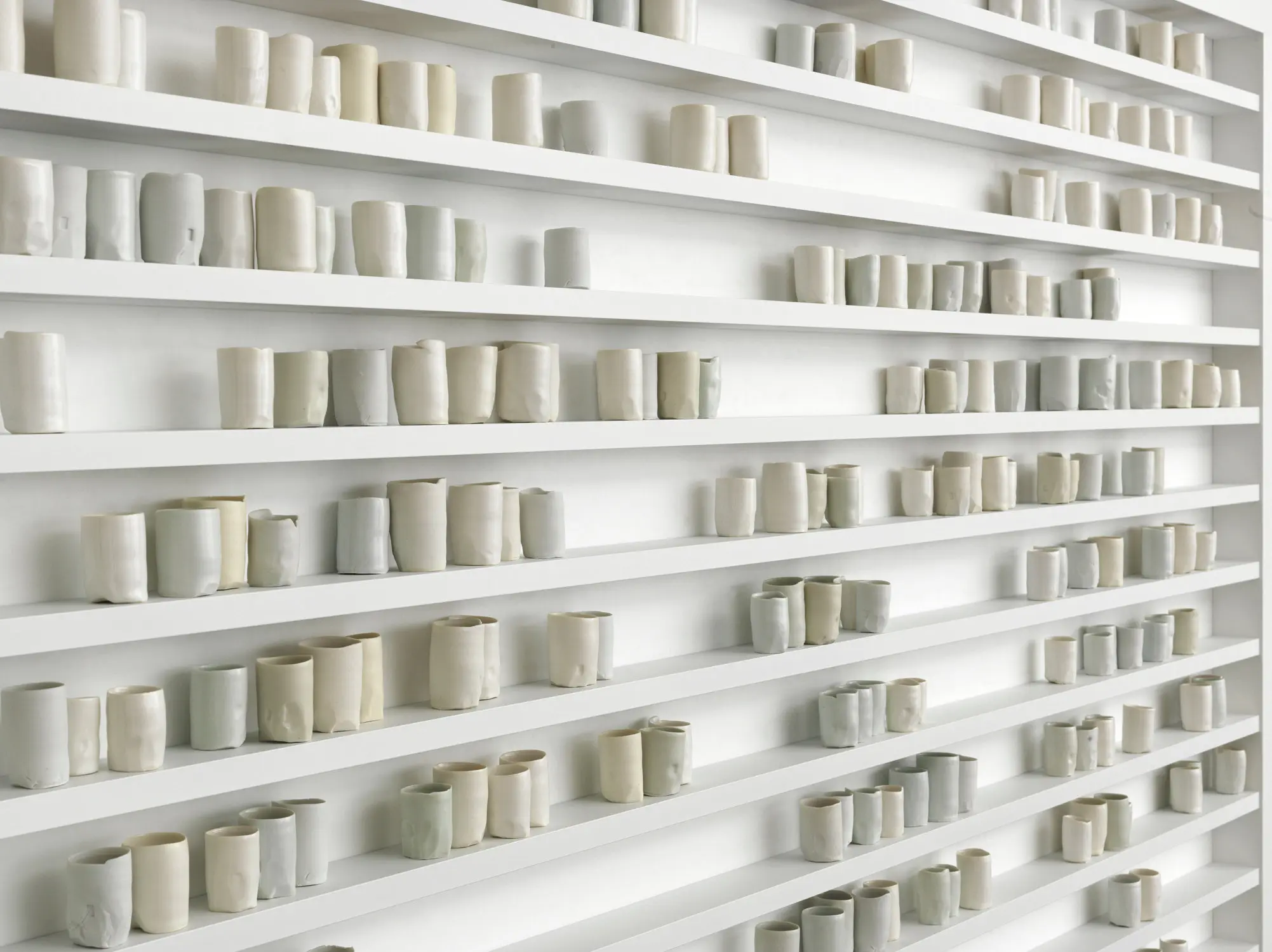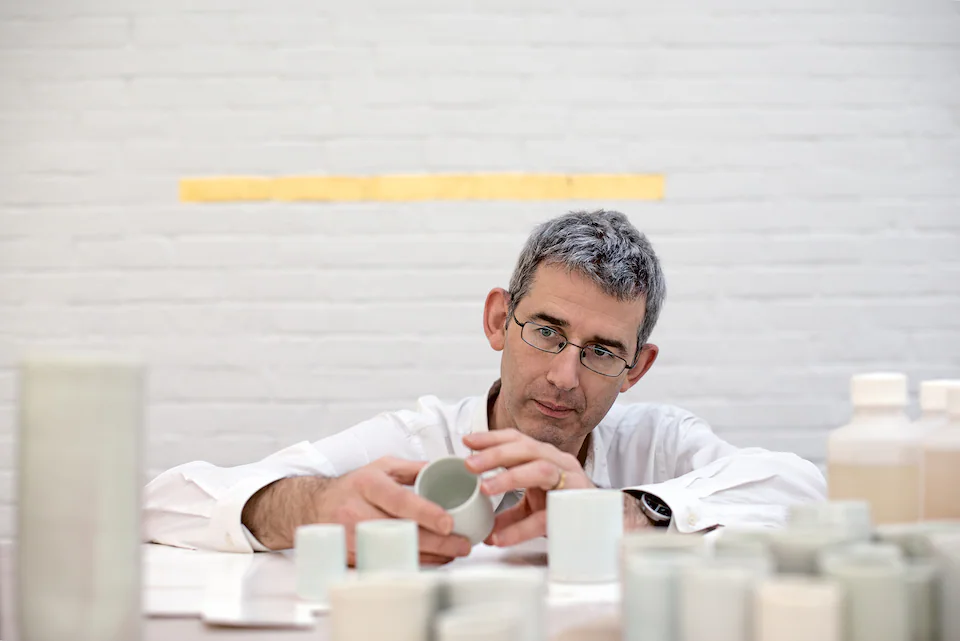After an unexpected day of sun over a bank holiday weekend the rain has returned. Deciding to do some thinning of shelves for a visit to my local charity shop I came across this book. I have tried to ‘get into’ on two or three times. Don’t ask me why but now the moment had come…..
The first thing that struck me was the graceful fluency of the prose and its intimate blend of memoir and history. Th author, a potter shares his lifelong passion with porcelain or ‘white gold’. He brings forty years of working with clay to the narrating of a story of five journeys. Here he shows his reader where this substance was refined, collected and celebrated. The theme might be. captured in this way : What is the mysterious allure of this substance?
From London to China, Germany and beyond the journeys are skilfully and intimately recorded. This reader felt he was with de Waal in the moments of discovery that are intertwined with history, desire, discovery and revelation.
My own first encounter with de Waals work was at Kettles Yard many years ago https://www.kettlesyard.cam.ac.uk/ and then locally here in Salisbury, more recently and regularly at the New Arts Centre https://www.sculpture.uk.com/ where his work is displayed in the Artists House. They are pieces of disarmig simplicity and beauty.
The history is complex and arresting. thought it is not always say to follow. The sub title of the book, a pilgrimage of sorts, offers De Waal and opportunity to tell his own story as a potter. While these snippets are the cause of some irritation to other reviewers I appreciated his humanity and honesty. There is a transparent honesty here of a life opened up to the incompleteness and flaws that all of us either deny or embrace. Texture, colour, imperfection and flaws are all part of the complexities of our lives.
I feel that de Waals fragility and honesty bring his art to life. He names the freneticism of his own addiction to busyness. He shows us what happens when we get side tracked and often lost within the distractions of learning and research. He confesses that he drinks too much coffee and doesn’t get enough sleep. His desk manages to lose valuable papers. His breathless distraction may be annoying for some but for my eye and heart it added to the soil and depth of what he sees and captures and creates. We all get lost and struggle to find the right words to describe the moment.
The pace of modernity and its electrical devices might have left us longing for something deeper, more authentic and beautiful. His agitation is gift for his art and for any careful reader in search of a bit of uncomfortable truth about the self in search of happiness.
One reviewer expressed this in this way
Yet it is still a treasure, for reasons never quite acknowledged in “The White Road.” All of its value was acquired after its making. It embodies domesticity (an element strangely absent from what is essentially a book about dishes) and aspiration and above all the dream of holding fast to what can so easily be lost in this merciless world. https://www.nytimes.com/2015/12/13/books/review/the-white-road-by-edmund-de-waal.html
The journey of discovery here in all its breathless adventure is captivating. It tells the story of porcelain with skill and from a hinterland of fastidious research. It is a long book but worth the effort to navigate its pages. Any reader will marvel at the energy and skill of this writer and potter – and long for a small piece of his work which are truly immaculate in their fragile beauty.
For those who imagine that Art is for those who are a little removed from the present struggles of a fragile world as then de Waal brings his sensitivities and wisdom into play with radical skill.
At the end of this book we land firmly in the 20th century. De Waal shows his reader the connections between international modernism in Russia, England and the Bauhaus in Germany. He narrates his the shocking to his discovery that Allach porcelain was produced by inmates of Dachau. Our attention is drawn to Hilter looking at a Nazi bambi figurine.
Art is never neutral in the hands of human beings. Our capacity to manipulate is shocking. In this story the skill, ingenuity and. beauty are held in tension with disgust, sorrow and anger. And so our ability to destroy, marginalise and dehumanise continue with its bloody consequences. What will save us? When will we learn ?
I am inevitably drawn to wanting to make some connections between my present role in education and ministerial formation and the work of artists and writers.
There is much to ponder here. I am an immediately struck by the inevitability of the sheer untidiness of all of our lives but especially for those who seek to grasp something within it some shape and meaning and truth. We do not understand who we are or the journey we are embark on by seeking to control or even eliminate ambiguity, paradox and contradiction. There is truth in the shades of grey and the stumbling attempts to express or name that which is essential for our well-being.
It takes time- for some a lifetime- to apprehend, understand and express what our road and journey has shown us. Giving a little bit more space to the brokenness of our lives might be part of the creation of truth and beauty to live and die by.
There is a beauty in the prose of this book which leaves me yearning for more beauty. This is essentially a spiritual task and one which cannot easily be manufactured or organised for. In the world full of too many words and not always the right ones how do we nurture beauty within ourselves and others ? What kind of space would help us to see and feel and apprehend the awesome creativity that is within each of us and is so amazingly offered and shared through the work of artists, musicians, playwrights, and poets?
At the heart of this book, I think there are two key elements to the spiritual search for truth, authenticity, and enlightenment. the first is the pace by which we move in order to connect. We might just need to slow down and allow this paceto show us new things and to make different kinds of connections.
To do this we need to stop and look and notice. De Waal above all us shows us in this journey how to notice. What might follow by the way we notice might just be a key that opens unexpected doors of perception and action.
I am of course glad that this book wasn’t slipped into the charity shop bag. Now – who to hand it onto ?



